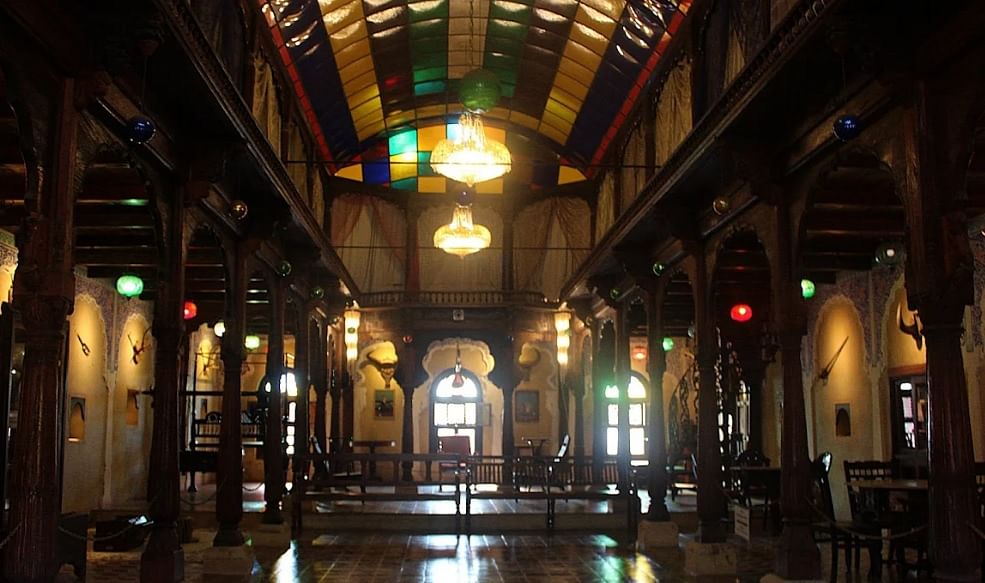

Vijayanath Shenoy, a former banker, is a legend among antique collectors and cultural conservationists; and the Hasta Shilpa Heritage Village in Manipal, near Udupi, is a testament to his passion for preservation.
Traditional houses dating from the 12th to the 18th century have been maintained impeccably for future generations. These ancient residences belonged to priests, traders, noblemen, and mariners. Textiles, musical instruments, handicrafts, lithographs, and paintings were later added to the houses.
Following Shenoy's death in 2017, village trustees created a 90-minute tour that included the Eastern, Southern, and Heritage by Night walks.
"Vijayanath Shenoy spent decades meticulously planning and constructing this complex," said Harish Pai, the joint secretary of Hasta Shilpa Heritage Village. "The trust has amassed chunks of material history, thanks to generous support from the Norwegian and other embassies. Certain infrastructure facilities in the village have been created with the help of the Sir Dorabji Tata Trust as well."
"Traditional buildings are one of the most powerful representations of our heritage. There is no better way to glimpse southern India's ancient heritage homes than to go to Hasta Shilpa Heritage Village in Karnataka."
Miyar House
The tour starts with Miyar House, constructed in 1856 and once occupied by South Canara brahmins. Built with mortar made of mud, lime, and juice extracted from raw sugar, the home stands out for its stately pillars and rich red-oxide flooring. Everything from the elaborate ceilings, slatted windows, pillars made from the wood of jackfruit trees, tapestries, and tapered pegs are part of the house's antique charms. The museum houses Shenoy's rescued treasures like tarnished brass pots, mud pottery, ancient automobiles, and even a soda pop machine.
Kamal Mahal of Kukanoor
The 13th-century Kamal Mahal was formerly the private office of the military governor of the Vijayanagar Kingdom. Kamal Mahal represents the darbar, where Harihara and Bukka (two brothers from the Sangama dynasty who are said to have founded Vijayanagar) hosted ceremonial meetings. The darbar is decorated ornately with kalamkari tapestries. In this 10-layered wooden design, there is a large, column-free central area. The king's office features a teak swing as its focal point and is surrounded by a 3D maze of carved pillars, with several swords from that era adorning the golden walls.
Kunjur Chowki Mane
Kunjur Chowki Mane, a 201-year-old double-storied home designed by a Malayali priest, is one of the impressive 18th-century houses on the Eastern Jaunt tour. Rooms, kitchens, and granaries are all arranged in an artistically pleasing manner. Kunjur Chowki Mane includes a menstrual room, where women were kept while they were on their period and banned from participating in communal events, including meals.
Deccan Nawab Mahal
Barid Shah of the Deccan dynasty built the Nawab Mahal, a single-storey palace, in 1912. The extravagant exteriors of this grand mansion are highlighted with buck heads, colourful tiles, and furnishings, displaying the flamboyant nawabi lifestyle of the Bidar Sultanate from Humnabad. A large hall inside has a handcrafted music instrument rack that holds many antique sitars. Chandeliers from Austria, imported wines and ittars and antique furniture are the other interesting artefacts here.
Mudhol Palace
The Maratha lords of Ghorpade built Mudhol House, a 16th-century palace, during the Rajaram period. Its Darbar Hall exemplifies cultural continuity from 1861 when the Mudhol king conducted court for his nobles.
Harihara Mandir, a temple built in 1216 dedicated to Vishnu, Shiva, and Parvati; and the 160-year-old Mangalorean Christian House are two other fascinating buildings to visit in the Hasta Shilpa complex.
Bhoot worship
A 5th-century Bhoot Kola tradition, that refers to the worship of Tulunadu Bhoota, is one of the many cultural activities of coastal Karnataka. Bhootas or guardian spirits are said to defend the financial interests of the Tulunadu communities. Some of the Bhootas worshipped are Annappa, Baiderlu, Jumadi, Kalluraya, Kodamanithaya, Kukkinathaya, Mammayi, Mayindale, Panjurli, and Varthe. In Hasta Shilpa Heritage Village, you will see many wooden murals of human and animal spirits.
Except for the vast exhibition of Bastar tribal sculptures from MP, many rooms dedicated to rare collections remain locked. Murals, lithographic prints, and gold-encrusted Tanjore paintings by Raja Ravi Varma and his printing tools too remain off-limits.
(Veidehi Gite is the founder of KrazyButterfly and a former advertising professional who writes on travel, luxury, food, fashion, and fitness.)